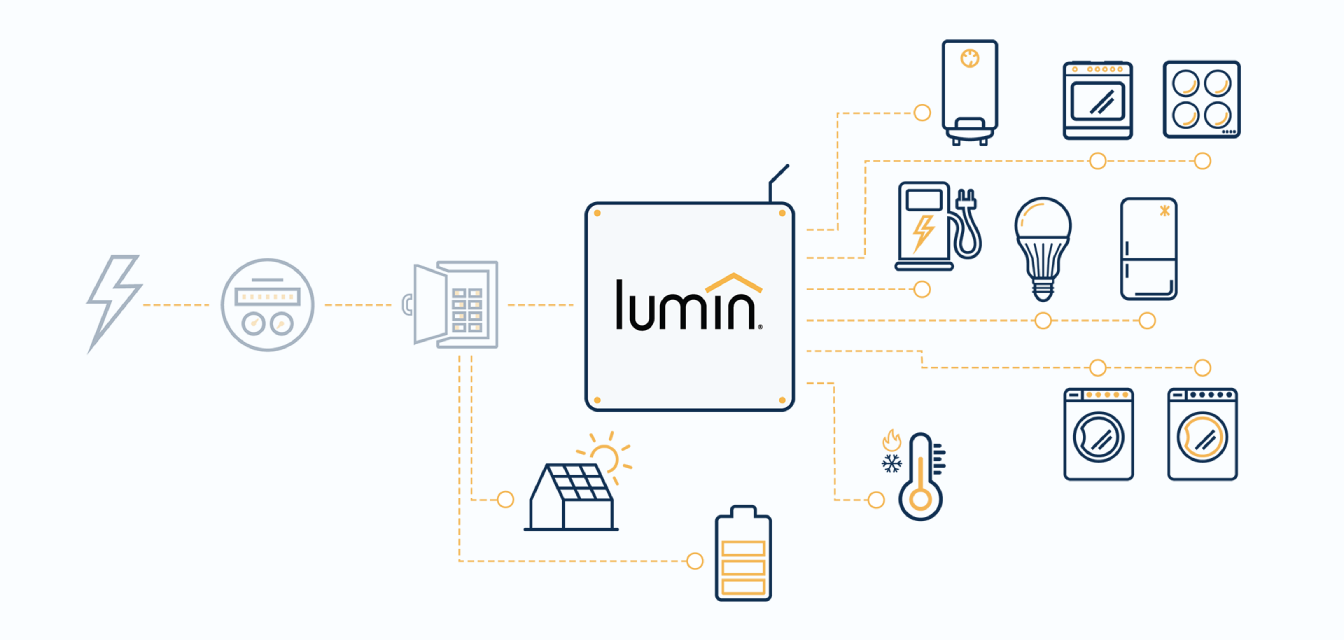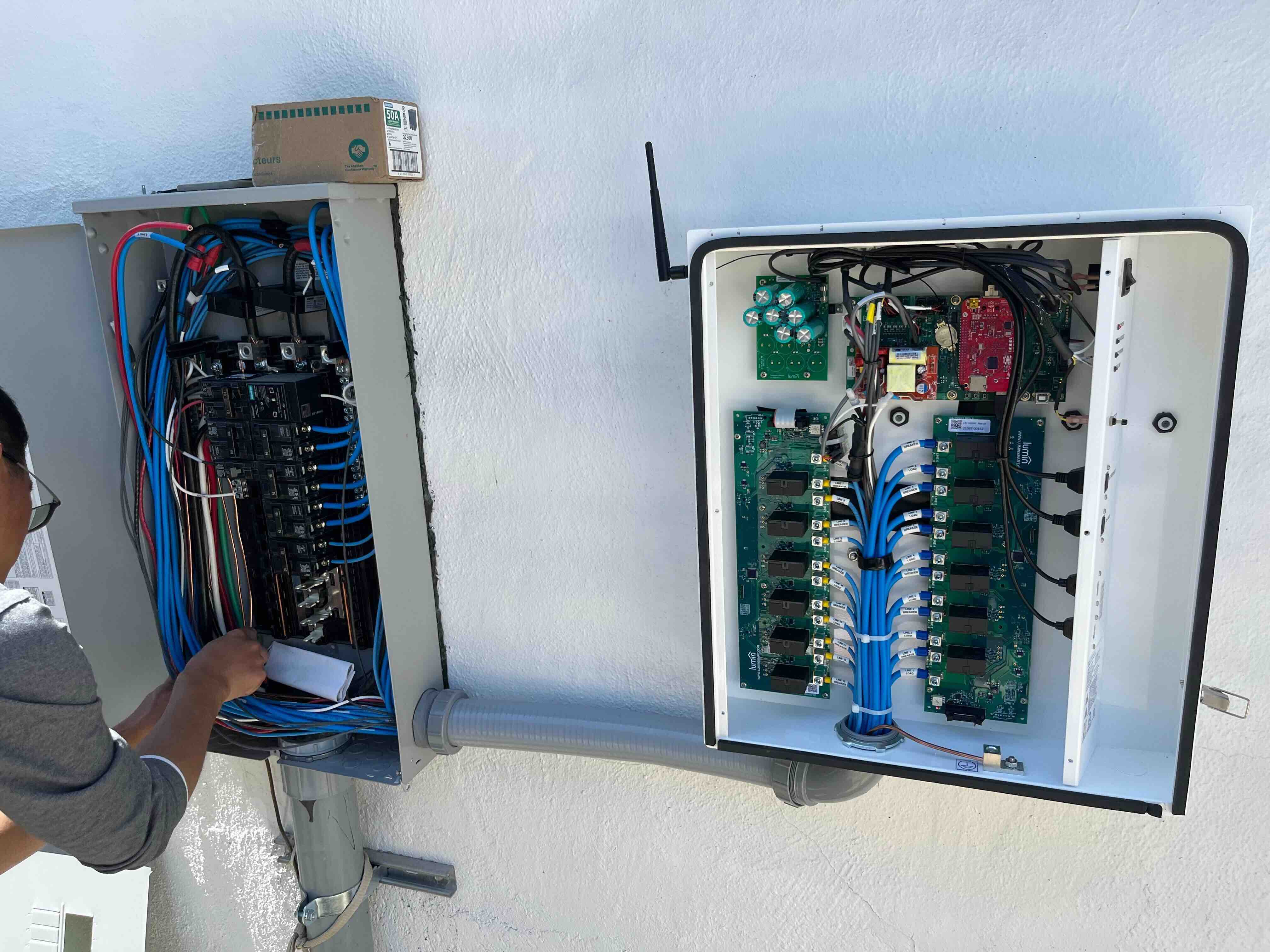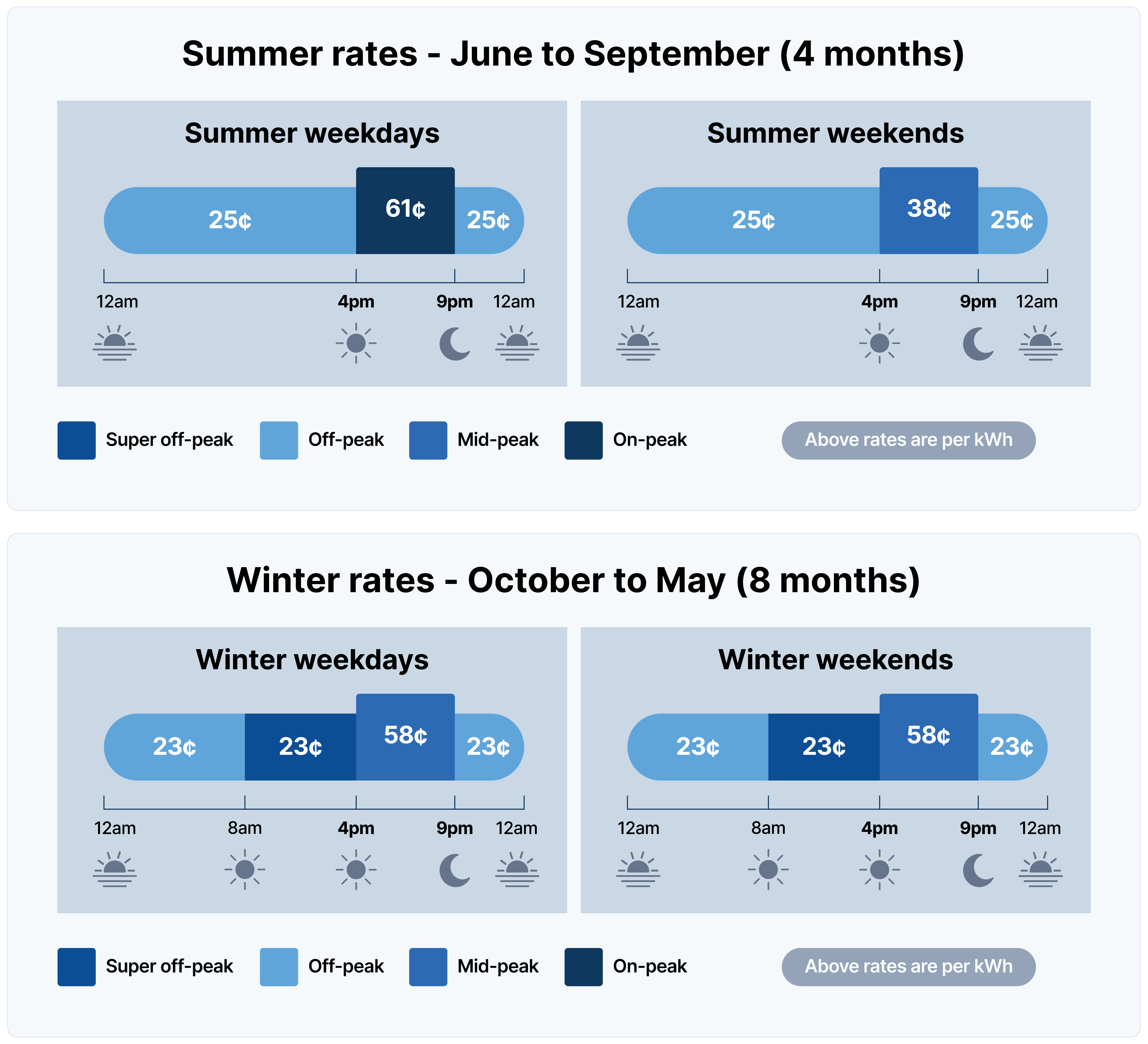Updated 6 months ago
Lumin Smart Panel Overview: How It Works And Who It’s For
Written by Ben Zientara Ben ZientaraBen Zientara is a writer, researcher, and solar policy analyst who has written about the residential solar industry, the electric grid, and state util...Learn more , Edited by Catherine Lane Catherine LaneCatherine has been researching and reporting on the solar industry for five years and is the Written Content Manager at SolarReviews. She leads a dyna...Learn more


Why you can trust SolarReviews
SolarReviews is the leading American website for solar panel reviews and solar panel installation companies. Our industry experts have a combined three decades of solar experience and maintain editorial independence for their reviews. No company can pay to alter the reviews or review scores shown on our site. Learn more about SolarReviews and how we make money.
Key Takeaways
The Lumin Smart Panel adds smart control of up to 12 circuits inside your main electrical panel.
The Panel is compatible with any electrical panel, and has special integration with home batteries from Tesla, Enphase, and SolarEdge.
The cost of the Lumin Smart Panel is between $2,100 and $2,900 before installation, and installation charges range from $1,000 to $1,500.
The installation may qualify for a federal tax credit of up to $600.
The Lumin Smart Panel is best for homeowners with existing home batteries who want to add smart controls to save money and extend battery life.
Lumin Smart Panel features and functionality
The Lumin Smart Panel is essentially an automatic circuit breaker with smart app control. It can control up to 12 circuits: 6 for loads that draw up to 60 amps, and 6 for loads of up to 30 amps.
The Lumin Panel can be installed alongside any main electrical panel and connected to the circuits inside. This differs from something like the SPAN Panel, which completely replaces your existing electrical panel.
Lumin makes two versions of the Smart Panel: one for indoor applications and the other for outdoor applications, which comes with a NEMA 3R-rated cabinet. The Lumin Smart Panel is compatible with any existing electrical panel and takes about 2 hours to install.

An outdoor-rated Lumin Smart Panel being installed. Source: Lumin on X
You can decide which circuits you want to control, but Lumin recommends never using the Smart Panel to control circuits for smoke detectors, fire suppression, medical devices, or your internet modem and router.
Using the Lumin Smart app, you can manually turn each circuit on and off and set up automatic control of any of the circuits based on the time of day, whether the grid is up or down, or the available capacity of a home solar battery.
In addition to setting automatic times for circuits to turn off, you can also set circuit priorities to turn off higher-draw appliances as available battery capacity decreases in an outage.
Here’s a bit more on each of the Lumin Smart Panel’s features:
Power outages and battery integration
When the power goes out, your home battery kicks in to keep the lights on, but the battery inverter might not have enough power to run your whole home.
Lumin offers a special “Smart Power Mode” for these events. Using the Lumin Smart app, you can set a wattage limit that all circuits in the home (even those that the Smart Panel doesn't control) are allowed to draw. You can also set a priority for each circuit the Lumin Panel controls.
As you use energy within your home during the outage, the Lumin Smart Panel automatically switches off low-priority circuits to keep your power draw under a specific limit and switches them back on again when enough power is available.
The practice of automatically turning off select circuits to prevent too much power from being drawn is called “load shedding.” Here’s a video showing how the Smart Power Mode works:
State of charge integration
As a power outage continues for extended periods, the battery's capacity can decrease rapidly. Lumin offers integration with Enphase, SolarEdge, and Tesla batteries that can automatically determine the “state of charge” or how much energy is left, and shed loads according to a priority you set.
Here’s a short video showing Lumin’s enhanced state of charge settings:
Time of use rates
Another way the Lumin Smart Panel can help is by saving money under a time of use (TOU) rate plan.
Under TOU rate plans, the cost of electricity changes based on the time of day. Energy is generally more expensive in the evening hours, which is when most people return home from work and use appliances, lights, and air conditioning.
People in Michigan and Missouri have mandatory TOU rates, and anyone who gets solar panels in California must also sign up for a TOU rate plan.

How TOU rates work - higher energy prices during the evening from Southern California Edison
The Lumin Smart Panel can automatically turn off non-essential circuits for high-powered appliances during these hours. For example, a water heater and upstairs air conditioner can be deactivated during peak times and reactivated after peak hours are over to save electricity.
Demand management
The term “demand response” refers to utility companies limiting grid demand by temporarily controlling their customers' smart devices to reduce demand among a large number of homes. This can be a very effective way to reduce the cost of grid power for all ratepayers.
Similar to demand response, a virtual power plant (VPP) is an aggregation of many utility customer batteries, which can be activated when the grid needs extra power.
Often, customers are rewarded for participating in a demand response or VPP program, earning a small amount of money (or a bill credit) for doing so.
As a connected device that can control circuits within a home, the Lumin Smart Panel can participate in demand response and VPP programs. However, because the device is relatively new to the market, Lumin has not set up participation in any current programs.
Lumin Smart Panel cost and availability
The Lumin Panel is available at retail prices of between $2,100 and $2,900 from sources like NAZ Solar Electric and Signature Solar and can also be purchased directly from one of Lumin’s partner installers.
Lumin estimates that the installation takes two hours, but installation costs will vary based on the job's complexity, local hourly rates, and the cost of materials and equipment. We estimate the installation cost to be between $1,000 and $1,500, bringing the total cost of the Lumin Smart Panel to between $3,000 and $5,000.
The Lumin Panel may qualify for a tax credit of up to $600 for electrical panel upgrades. According to the IRS, to qualify for the credit, the panel must be “installed in conjunction with, and enable the installation and use of any qualified energy efficiency improvements, or any qualified energy property (such as a heat pump).” Discuss the credit with your tax advisor to ensure you can qualify.
What problems does the Lumin Smart Panel solve?
The modern need for reliable electricity has led many people to install solar panels and home solar batteries, so they can have power in the event of an outage. But whole-home backup batteries can be quite expensive, so people tend to choose a battery with smaller capacity and only power essential circuits in their home in the event of an outage.
This is typically accomplished by connecting the battery to a critical loads panel, which connects to certain circuits inside the home’s main electrical panel to provide power from the battery to only those circuits in an outage. But critical loads panels are rather “dumb,” meaning they must be manually switched on and off.
The Lumin Smart Panel provides automatic control of key circuits in a home to reduce power draw from non-essential appliances at certain times. The Smart Panel allows homeowners with battery backup to preserve some of their battery capacity and reduce their power consumption during times when the grid is expensive.
In addition, the rise of time-of-use electric rates has led people to seek out a solution that can deactivate appliances that draw a lot of power during the evening “peak” hours when electricity is the most expensive. People don’t want to have to go to their electrical panel every evening to turn these circuits off and then back on again.
Pros and cons of the Lumin Smart Panel
The Lumin Smart Panel compares favorably with other smart electrical panels on the market and offers several advantages. However, it also has some drawbacks compared to other options.
Pros
Attaches to any existing electrical panel
Doesn’t require moving the panel or rewiring.
Allows smart control of home appliances.
Saves money on utility bills under TOU rate plans
Allows customization of the use of energy stored in a home battery
Integrates with batteries from very popular brands: Tesla, Enphase, SolarEdge
Relatively inexpensive and easy to retrofit to existing home
Cons
Can only control up to 12 circuits in a home
Doesn’t offer solar priority (i.e. activating circuits like EV chargers when there is extra solar power available)
Doesn’t cost much less than competing products that offer more control
Bottom line: Who should get the Lumin Smart Panel?
In our opinion, you should get the Lumin Panel if all of the following are true:
You have a home battery
You are on a time-of-use rate plan
You want to have manual and automatic circuit-level control via a smart app
You have no more than 12 circuits you need control over
You have some space on the wall near your main electric panel
You can find a great company to install the Lumin Smart Panel
If all of those things are true for you, we recommend the Lumin Smart Panel as a great way to add smart circuit control to your home!
Ben Zientara is a writer, researcher, and solar policy analyst who has written about the residential solar industry, the electric grid, and state utility policy since 2013. His early work included leading the team that produced the annual State Solar Power Rankings Report for the Solar Power Rocks website from 2015 to 2020. The rankings were utilized and referenced by a diverse mix of policymakers, advocacy groups, and media including The Center...
Learn more about Ben Zientara